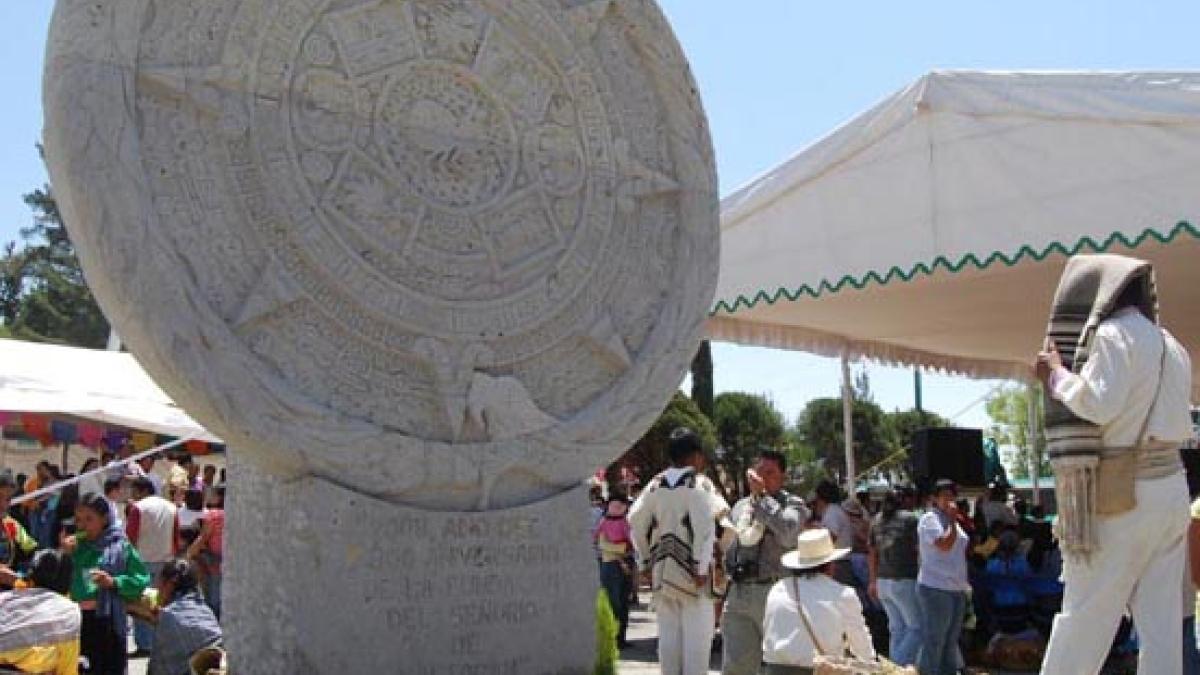ASU anthropologist examines community identity in award-winning article

Christopher Morehart is an academic who thinks outside the box. The Arizona State University assistant professor is an environmental anthropologist, an ethnobotanist and a landscape and household archaeologist. He can tell us a lot about past peoples, from how they worked the land to how their politics and economies played out, even how their societal dynamics continue to influence communities today.
Morehart’s holistic approach to his work recently earned him the Gordon R. Willey Award from the American Anthropological Association. The award recognizes “archaeological research that intersects with topics of broad anthropological interest,” and is chosen from the articles published during the last three years in the association’s flagship journal, American Anthropologist.
Morehart, faculty in the School of Human Evolution and Social Change in the College of Liberal Arts and Sciences, published his winning article in 2012. “What if the Aztec Empire Never Existed? The Prerequisites of Empire and the Politics of Plausible Alternative Histories” explores identity politics and the complicated relationship between local and archaeological narratives.
The article’s inspiration was the small community of Xaltocan, Mexico, where Morehart lived for a year while directing a project on raised field farming. There, as in many towns near dig sites, the people are keenly aware of their past and interested in archaeology, which pumps money into the economy and affects local politics.
The big ‘what if?’
Xaltocan has a somewhat bittersweet history. Once the capital of a powerful kingdom, it was conquered a few decades before the dawn of the Aztec empire. If things had gone slightly differently, the community’s legacy might have been much grander.
“There is a strong sentiment that Xaltocan could have been not only the capital of the ancient Aztec empire but, given that this capital would become Mexico City, the capital of the modern nation,” Morehart says.
He witnessed proof of that sentiment during a festival celebrating the town’s 800th anniversary. The gathering included politicians, members of the military and resident historians. Speeches by attending dignitaries reinforced the idea of lost glory. The highlight was the unveiling of a monument: a customized Aztec calendar stone erected in the central plaza by the local historical society.
The group had replaced the Aztec sun god, carved into the center of the original stone, with a hieroglyph of Xaltocan’s ancient name.
Morehart thought the item made a striking statement, as the original stone – on display in Mexico City – is considered one of the most powerful symbols of Mexican identity.
By installing the stone, the historical society promoted a version of local character that doesn’t match archaeological records, but one that empowers the community and asks that we rethink the past and consider the "what ifs."
“I realized that that one monument says so many things about how members of the community see themselves or want to see themselves in relation to almost 1,000 years of history,” Morehart says. “That monument materializes a statement of community identity in regards to indigenous ethnic identity, as well as Mexican nationalist identity.”
Archaeology’s shifting role
Land in the area is quickly being privatized and developed into shopping malls, condos and the like, which affects archaeology in Xaltocan, along with locals’ relationship with it.
As Morehart reflected on this idea, he kept wondering at the role archaeology plays in this story. He questioned whether his work supports the regional idea that stresses the importance of Xaltocan or contradicts it. In short, he asked himself what implications his research has one way or the other.
“A lot of archaeologists who try to do this kind of engaged archaeology do great work, but many of their efforts are somewhat Panglossian. They end up concluding that they themselves have avoided the errors and problems of other projects,” he explains. “I didn't do this. I tried to be more self-reflective and specifically examine the possible positive and negative consequences of my own research.”
Building bridges
Morehart’s work is an example of ASU’s strengthening ties with Mexico through projects and partnerships.
Though he has extensive fieldwork experience throughout Mesoamerica, in recent years, Morehart has concentrated on the Basin of Mexico and made some amazing finds. Those include evidence of mass human sacrifice and – using satellite data, aerial photos and excavation and analyses – one of the largest raised field, wetland farming systems in highland Mexico. The latter, near Xaltocan, provides insight into how farming systems formed over time and collapsed due to changes in the ecological and political landscape.
Currently, his main research focuses on human-environmental relationships in the northern Basin. This endeavor mixes archaeology, ecology, history and sociocultural anthropology to better understand the human and natural aspects of long-term change. It spans roughly 1,500 years, running to modern day, and addresses the land and settlement strategies that would eventually lead to the creation of Mexico City.
“This is a dynamic period of time, with communities forming and abandoning in response to ecological changes, but also in response to how local people were, and continue to be, shaped by political and economic conditions,” Morehart notes.
His next step is to survey and map prehistoric and historic sites in three adjacent regions north of Mexico City.